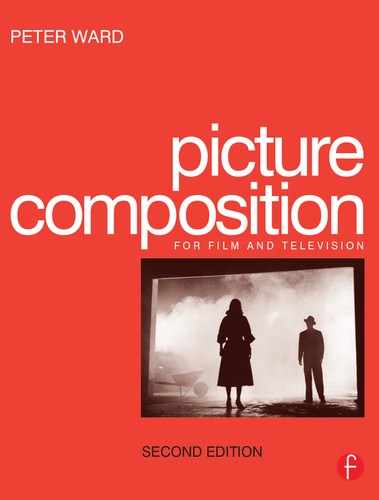Preface
In the last years of the nineteenth century, moving pictures were viewed in penny arcades on Thomas Edison's Kinetoscope. This peepshow allowed the solo viewer to crank a handle, peer into a darkened box and watch in fascination the dim flickering silent representations of movement. This was quickly supplanted by projected images, but the mystery of a miniature world continued to have a strong attraction. After 45 years as a cameraman, I am still intrigued by a similar magic whenever I look through a viewfinder. There is a concentration of the field of view into a small intense, two-dimensional image that is quite unlike normal perception.
Moving the camera, lens and viewpoint creates a continuing kaleidoscope of changing images. Some images are attractive and pleasing whilst others are dull frames, a confused slice of passing reality. What makes the difference? What is the distinction between an image on the screen that delights the eye and the everyday, depiction of a commonplace ‘window’ on the world?
It may be the content of the picture that fixes the attention or it may be the technical quality of the image that is enjoyed. Frequently, however, it is the often unconscious pleasure derived from an arrangement of mass, line, tone and colour. The composition of the image appears to be one aspect of film and television production that attracts the audience and holds their attention.
Composition – the arrangement of all the visual elements within the frame – is at the heart of all visual communication. It is a subject that is seldom taught to broadcasting/film trainees who are expected to learn by example or to fall back on intuition or instinct. Many cameramen, in fact, insist that composition is intuitive and assume that framing decisions are based on personal and subjective opinion. Even a cursory examination of an evening's output of television will demonstrate the near uniformity of standard conventions in composition. There are original and innovative exceptions and this book aims to discuss the differences and the conventions of picture composition.
There is a huge diversity of film and television production techniques, ranging from a short 30-second news piece to a 2-hour blockbuster of a film In general, they are all linked by a similar technique but there is a big variation among different types of production in the number of people involved when framing up a shot. I have attempted to give examples from both ends of the production spectrum but camerawork is shaped by production content and inevitably there will be incompatibilities between working methods.
Throughout the book I use the term ‘cameraman’ without wishing to imply that this craft is restricted to one gender. ‘Cameraman’ is the customary title to describe a job that is practised by both men and women and ‘he', where it occurs, should be read as ‘he/she'. Also, I often refer to the cameraman choosing visual options when in the majority of situations it will be a collaborative effort between director, designer, lighting, cameraman, etc.
This second edition has been extensively rewritten to take into account the impact of widescreen TV and the continuing growth of alternative camerawork styles to the classic Hollywood conventions.
Although there are enthusiasts in many crafts and professions, it is surprising, in such a competitive commercial activity as film making and television production, to find so many people who enjoy and are fascinated with the activity of picture making.
The British writer and stage director Jonathan Miller suggested that the rehearsal and performance of a film or theatre drama was literally ‘play'. It is like the childhood absorption in pretence and make-believe. In a variety of film or television productions in studios or on location, large numbers of adults work together and take very seriously their individual task of perfecting an illusion. It is ‘play’ with a purpose.
One such film craftsman is Robert Kruger, film editor and director whose film making career began in the British documentary movement in the 1940s and moved to other types of factual films and European features. This book is dedicated to Robert whose enthusiasm for the art and craft of film making, even after a lifetime of working on over 1000 films, is undimmed.
My thanks to Robert, Alan Bermingham and Laurence Anthony for reading the manuscript and making many helpful and constructive suggestions. Needless to say, any errors or omissions in the book are mine My thanks also to Margaret Denley of Focal Press and to John Rossetti and Mary Beresford-Williams for permission to reprint her photographs of television production. A special thanks to Patrick Caulfield for providing the drawing for the frontispiece of the book and to my wife, Sue, and my children, Sally and Edmund, for their help and encouragement in its production.
The cover picture is from ‘The Big Combo', from the film library of Richard L. Rosenfeld, whose permission to reproduce it is gratefully acknowledged. It is a still from a film shot by the cinematographer John Alton, who was one of the first cameramen to write about his craft.
